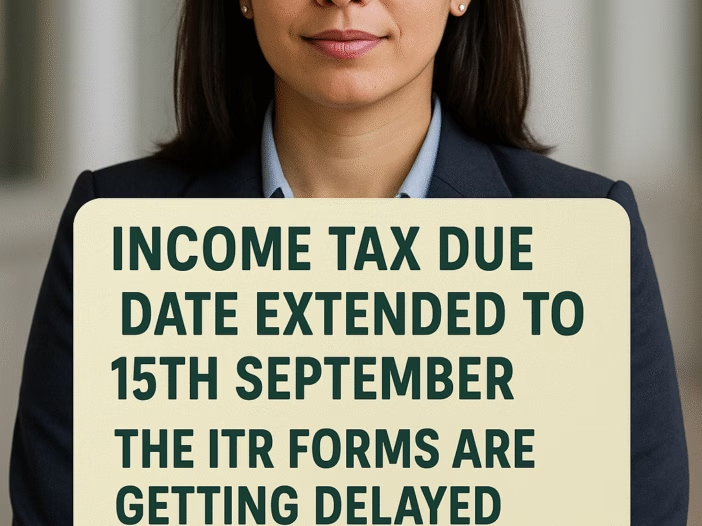
In a significant relief for taxpayers, the Central Board of Direct Taxes (CBDT) has extended the deadline for filing Income Tax Returns (ITRs) for Financial Year (FY) 2024-25 (Assessment Year 2025-26) from July 31, 2025, to September 15, 2025. ITR Filing Date Extended, this decision comes amid major revisions in ITR forms, delays in utility roll outs, and the need for accurate tax credit reflections.
Why Was the ITR Filing Date Extended?
The extension was announced following concerns over system readiness and extensive changes in ITR forms. Key reasons include:
- Major Revisions in ITR Forms
- The ITR forms for AY 2025-26 have undergone structural and content updates to simplify compliance and enhance transparency.
- A notable change is the split in capital gains reporting—taxpayers must now differentiate gains made before and after July 23, 2024, due to amendments in the Finance (No. 2) Act, 2024.
- Delay in ITR Filing Utilities
- The Income Tax Department has not yet released the e-filing utilities (online and offline modes), making it difficult for taxpayers to file returns.
- The first batch of ITR forms was notified only in late April and early May 2025, causing delays in system integration.
- TDS Credit Reflection Timeline
- TDS (Tax Deducted at Source) statements for Q4 FY 2024-25 are due by May 31, 2025, but credits will reflect in taxpayer accounts only by early June.
- Without an extension, taxpayers would have had only two months(June-July) to reconcile TDS details and file returns, increasing errors and mismatches.
Who Benefits from the Extension?
The new deadline applies to:
- Salaried individuals
- Non-audit taxpayers(individuals, HUFs, AOPs, BOIs)
- Small businesses under presumptive taxation (ITR-4 filers).
However, audit cases (businesses requiring audits) must still file by October 31, 2025, while transfer pricing cases have a deadline of November 30, 2025.
Key Changes in ITR Forms for AY 2025-26
- ITR-1 (Sahaj) & ITR-4 (Sugam):Now allow reporting long-term capital gains (LTCG) up to ₹1.25 lakh, previously restricted to ITR-2.
- ITR-2 & ITR-3:Require detailed capital gains bifurcation (pre/post July 23, 2024).
- ITR-3:The asset-liability disclosure threshold under Schedule AL has been raised from ₹50 lakh to ₹1 crore, reducing compliance burden.
- New TDS section codesmust be specified in ITR-5 and ITR-6.
What Should Taxpayers Do Now?
While the extension provides relief, experts advise:
✔ Early tax liability calculation to avoid penal interest under Section 234B (if 90% of tax is not paid by March 31, 2025).
✔ Reconcile Form 26AS and AIS for accurate TDS/TCS credits before filing.
✔ Avoid last-minute filing to prevent portal congestion and errors.
Conclusion
The ITR Filing Date Extended, is a welcome move, giving taxpayers 46 extra days to comply with new reporting requirements. However, those expecting refunds should file early to avoid delays. The CBDT’s decision aligns with past extensions (like during COVID-19) and reflects a taxpayer-friendly approach.
Read here ITR due dates.
